It takes a village
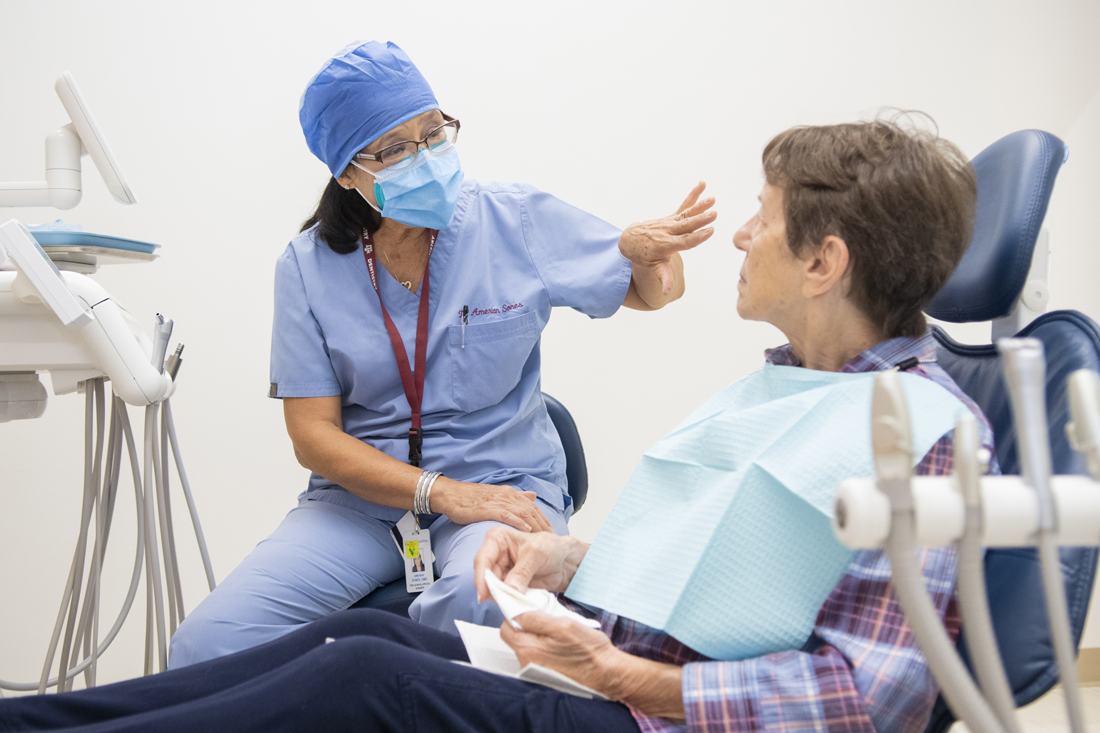
Most people in the world are connected to a cancer diagnosis in some way. Whether a personal diagnosis or providing support to a friend or family member, fighting cancer is a difficult and overwhelming problem to face. It’s a disease that takes a village to defeat, and for many years, Texas A&M School of Dentistry has partnered with Baylor University Medical Center on collaborative treatments for oral, head and neck cancer patients.
Dr. Amerian Sones, director of dental oncology in the Center for Maxillofacial Prosthodontics, is leading the charge for the dental school, which offers comprehensive, specialized care and reconstructive rehabilitation for patients.
“The dental role in cancer treatment really strives to improve the quality of life,” Sones said, “as well as overall health. Preparing the patient for the cancer treatments, i.e. chemotherapy or radiotherapy, requires a dental clearance prior to beginning and making sure the patient understands the oral aftereffects of the treatment.”
Stepping up
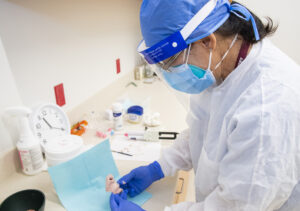
For many years, Sones and other A&M dental school faculty treated oral cancer patients at the Sammons Dental Clinic within Baylor University Medical Center, but when the clinic’s planned closure happened to coincide with the COVID-19 pandemic in 2020, Sones stepped up to fill the void by bringing the practice to the new A&M dental clinical facility.
“Those patients with head and neck cancer needed to be seen, pandemic or not,” Sones said. “When the Sammons Clinic closed, they really had nowhere to go. This was important, to have a place to refer patients to, and I saw it as a great opportunity for Texas A&M University to be involved. And what an ideal location at our new clinical facility.”
The Texas A&M University Dental Oncology Clinic is the only one of its kind in the Dallas-Fort Worth Metroplex and one of only a few in the United States.
“Head and neck cancer is so devastating because it affects how we present ourselves to the world — our face and smile, our ability to speak, drink, enjoy our favorite foods, display our emotions, and present to our friends and family,” Sones said. “Restoring these important personal characteristics is why intraoral and extraoral rehabilitation is so important and appreciated by patients.”
Collaborating on care
Twice a month Sones and a team of medical physicians and head and neck support professionals meet for Head and Neck Tumor Board at the hospital. Various cases are presented, and the team devises the best treatment plans for each individual.
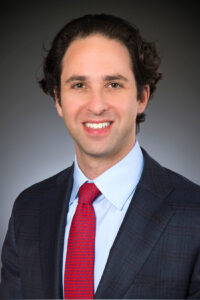
Dr. Eric Nadler, medical oncologist, provides important treatment options regarding chemotherapy and coordinates the treatment with the dental clinic and radiation oncology.
“There’s a surgical approach [to treatment], and a diagnostic approach, and then the radiation approach,” Nadler said. “In some cases, my role is more prominent, and in others, less central. It varies. Sometimes you just need my dental colleagues. Other times it’s just the surgeon or sometimes just the radiation doctor. Sometimes it’s all three.”
Dentists play an important role in discovering a head and neck tumor as they perform an oral cancer screening and examination. The process of making a clinical diagnosis of head and neck cancer often begins with the local dentist, Sones said. In many cases, a dentist will notice an unhealing intraoral ulcer, swollen mass in the neck, or white or red discolorations and will recommend the patient be examined by their general physician. If the doctor determines further care is needed, he or she will refer the patient to an ear, nose and throat specialist. If treatment is required, patients are often referred to Baylor Medical Center for definitive care.
Patients with evidence of a tumor, confirmed with a biopsy, go through an initial visit involving a complete evaluation by a head and neck cancer surgeon, as well as an oncologist.
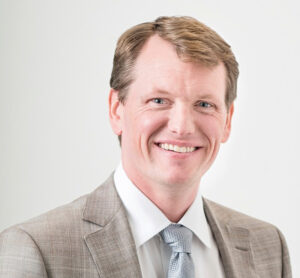
Radiation oncologist Dr. Granger Scruggs with Texas Oncology and Baylor University Medical Center said during this time, the patient is educated about his or her diagnosis and potential treatment plans, which could include radiation alone, surgery or a combination of radiation and surgery.
According to Scruggs, the typical patient with oral, head or neck cancer will receive radiation treatment five days a week for a period of several weeks, depending on the extent of their disease. Though the treatments don’t take long to administer, it can be a stressful process with various side effects, including dry mouth.
“Dry mouth increases the risk of patients’ dental decay, so we require patients to see their dentist before treatment for two purposes,” Scruggs said. “One, if they have any problematic teeth, we want those extracted prior to radiation. If you do an extraction post-radiation, there’s a much higher risk of infection and pain. The second thing is to educate the patient about extra fluoride treatments [to help prevent decay]. If a patient doesn’t have a dentist, I refer them to Sones for evaluation.”
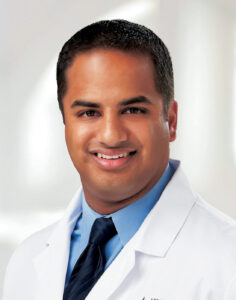
Dr. Amol Bhatki, co-medical director of the Skull Base Center and chief of the Division of Otolaryngology – Head and Neck Surgery at Baylor University Medical Center, emphasized that dental care during head and neck cancer treatment is paramount.
“Dentistry has several roles,” he said. “One is to evaluate the patient as part of their treatment. Patients who require head and neck radiation are susceptible to significant dental disease or jaw disease. Equally important – dental care that happens after surgery, helping with rehabilitation and ensuring that the teeth left behind can be preserved.”
If surgery is required to remove the tumor, Bhatki said reconstruction is considered at the same time and incorporated into the plan.
In addition to cosmetic changes, patients’ ability to speak, breathe or swallow could be affected. Other senses like sight, hearing or smell could be impacted, too.
“We have divided the head and neck area into these regions of expertise,” Bhatki said. “We have people who specialize in throat cancer, cancer of the voice box, cancer of the neck, thyroid, cancer of the mouth and tongue, or in my case, cancer of the nose and sinuses.
“Just removing the tumor results in an intraoral defect,” he explained. “How are we going to close the defect and what type of rehabilitation is available?”
Besides prosthetics, Sones said skin grafts and can also be utilized for post-surgery repairs. Occasionally, if radiation is not part of the treatment plan, dental implants may be placed into the bone to help support a prosthesis. Doctors can take flesh from another part of the patient’s body, typically the leg or forearm, and reconstruct the defect. However, this can sometimes pose a challenge when it comes to restoring teeth in the future as excessive skin graft flaps may limit the space needed for tooth replacement.
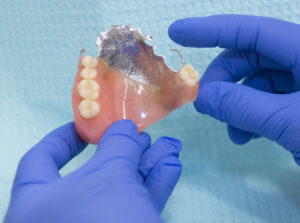
Sones said if there’s a defect in the palate, she will make an immediate surgical obturator for the patient, which is delivered at the time of surgery and also serves as a “dressing” for wound healing. A surgical obturator supports soft tissues after surgery, restoring the patient’s original dentition and facial form.
“The surgical obturators give patients the ability to eat and speak normally,” she said. “Being unable to smile, speak or drink normally while with loved ones, can take a toll on patients’ mental health, and the obturators can help with that as well.”
Most importantly, she added, it gives the medical provider the ability to watch for signs of the cancer returning. On average, Sones said she sees roughly six to 10 patients a month for evaluations. Of those, one to two need prosthetics.
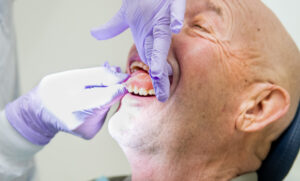
John Anderson, 70, of Ennis, was diagnosed with cancer in December 2022 when a small, cancerous tumor was discovered around some of his upper left bicuspid teeth. He had it surgically removed, but it left a small hole in the roof of his mouth, which is now covered by one of Sones’ prosthetics.
“It began as an unusual growth around his bicuspids, and it biopsied as a malignancy,” Sones said. “This prosthesis was made for him and delivered in the OR, ready the day of the surgery.”
Jennifer Shafferman, 42, of Coppell, is one of Sones’ younger patients. The preschool teacher had a cancerous tumor removed from her salivary glands in 2013, and she’s worn a surgical obturator ever since.
“It was tough, but I have a good support system,” Shafferman said. “I’m in today [Feb. 21] to get a new prosthesis. I’ve had this one for nine years, and it’s time for a new one.
“When I first learned I’d need a prosthetic, I just wanted something I would be comfortable with and that would allow me to look and feel normal,” she said. “I just wanted something that would work for me, so I could eat and talk. Dr. Sones is my lifesaver.”
Sones added that her clinic also offers counseling options for patients. A diagnosis is always scary, not to mention the potential changes and struggles one endures during and after treatment. Caring for a patient’s entire well-being includes their mental health, as well as the physical.
Selective funding is available to help cover the cost of treatment for uninsured patients, and housing is also available at the Hope Lodge, a new housing facility provided by the Jerry Jones family through the hospital, for patients who are unable to commute for treatments.
Increasing awareness
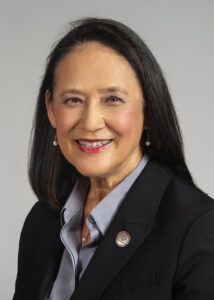
Sones emphasized anyone can have oral, head or neck cancer, no matter their demographic. According to the National Cancer Institute, head and neck cancers account for 4 percent of all cancers in the United States. In 2021, about 68,000 men and women were diagnosed with some type of head or neck cancer.
These types of cancers can be caused by numerous factors, including alcohol and tobacco use, radiation exposure, a family history of cancer or other genetic disorder, or some types of human papilloma virus (HPV). Among her own patients, Sones noted they tend to be younger than in the past. Previously, most of the general head and neck cancer patients were older, white males, but she said many of her patients today are in their 30s and 40s. On average, she still sees more men than women. She also added that she has seen an uptick in cancers related to HPV and a downtrend in cancers caused by tobacco use.
The key to early diagnosis and treatment is an awareness of one’s own body, as well as regular checkups, Sones said.
“Look for any small, white or red lesions in your mouth or an ulcer in your mouth that doesn’t go away,” she said. “An ulcer on the tongue … it may look like you bit your tongue … that doesn’t go away after two or three weeks could also be a sign. You can also look on the inside of your cheeks for white striations, which could be pre-cancerous.”
Other potential warning signs of which people need to be aware include lumps on the neck or ears, new or growing moles on the skin, or even a sore throat, voice hoarseness or nosebleeds that persist.
“That’s why dentists play an important role; many dentists and dental hygienists have helped make the diagnosis because they were the first to notice a lesion in the mouth,” Sones said.
Looking ahead

Trends in patient numbers are somewhat concerning to Sones, who said this clinic and the interdisciplinary work it does with Baylor is only becoming more important for the DFW area. Patient numbers are trending upward in recent years, she said, particularly among younger people.
“We’re seeing more patients in the 30 to 40 age group because of this HPV virus,” she said. “Who knows for sure why, though. It could be carcinogens in our food, or the environment that is infecting us, besides the inherent virus. It also seems to be more in men than women; it’s very concerning.”
Having steered the clinic through the COVID-19 pandemic, Sones said a lot of the precautions remain in place because cancer and subsequent treatments weaken a patient’s immune system. Masks, gloves and face shields are still used to not only protect the patients, but also the care providers, as they work in and around people’s mouths, throats and nasal passages.
Looking to the future, Sones is excited to meet new challenges and to continue the school’s partnership with Baylor and new oral surgery faculty. Dr. Likith Reddy, department chair, has recruited new OMS faculty such as Dr. Dina Amin and Dr. Ehab Shehata, who also specialize in head and neck surgical interventions and are on staff at the BUMC hospitals, along with Sones, who is also credentialed at BUMC. Dr. Andrew-Read Fuller and OMS residents have been essential for taking care of patients urgently in need of pre-radiation extractions.
While there is no set timeline in place yet, she said she is eager to put together a dental oncology rotation for residents to gain experience in her clinic with patients. She is also on the lookout for future funding opportunities and possible maxillofacial residency programs.
“There are research grants available for head and neck cancer clinical research,” she said. “Numerous organizations in the Dallas area and federal money are also potential funding sources.
“The future is promising, and this area of expertise will always be an important area of interprofessional care and a special opportunity for Texas A&M University to continue to work with our medical colleagues, close in proximity to our new clinical facility, to provide the state- of-the-art care for our patients.”